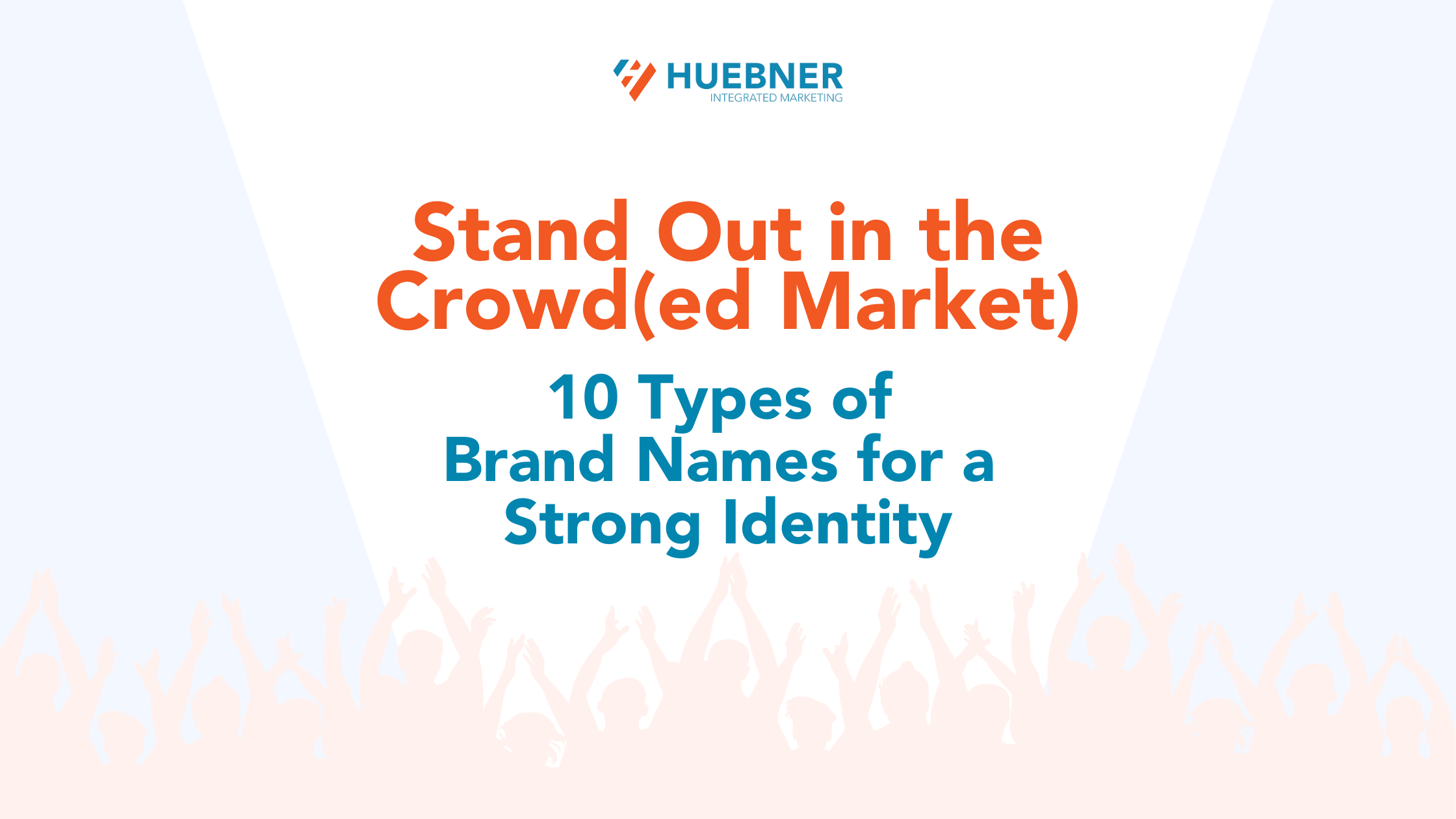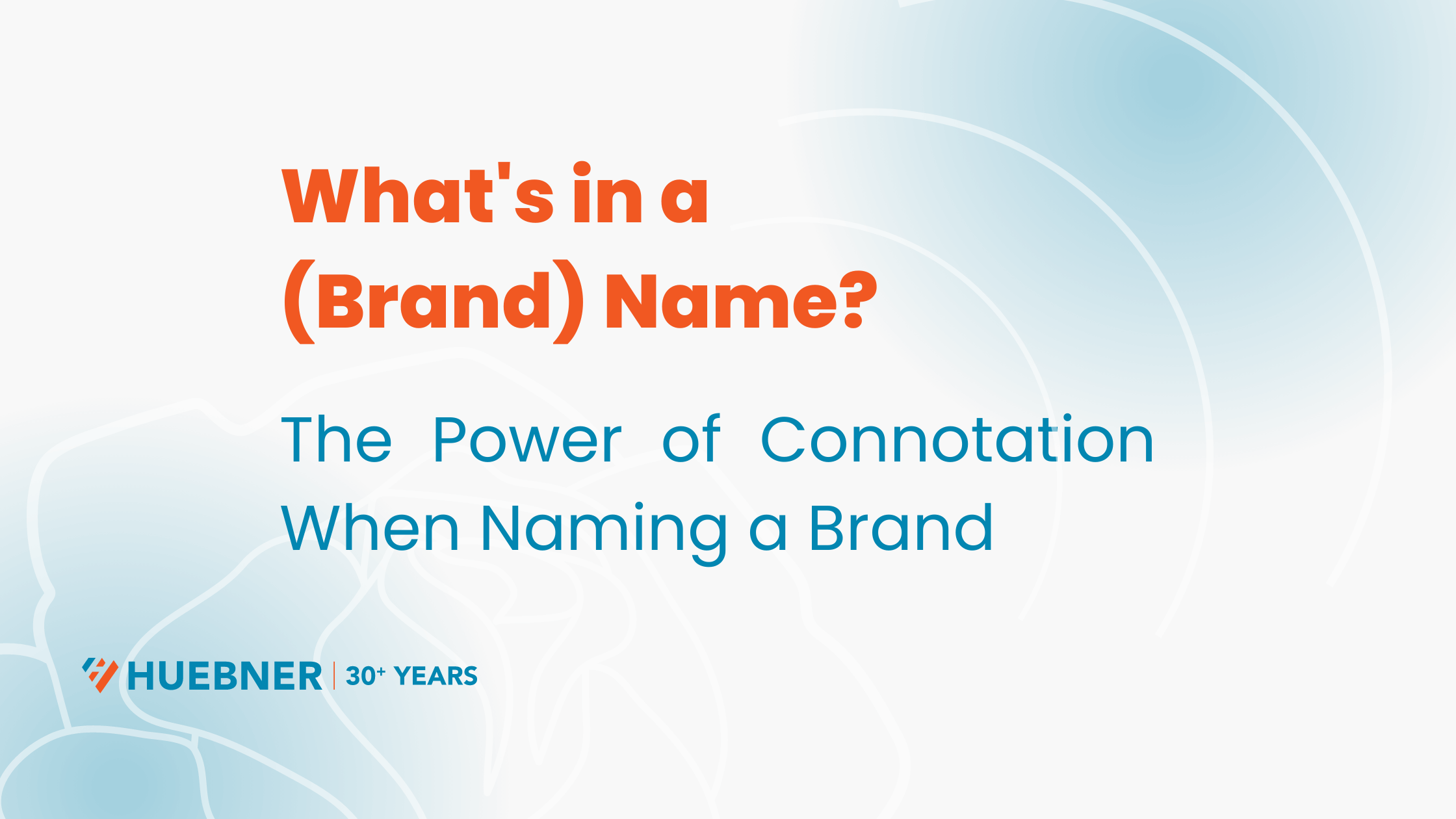
10 Types of Brand Names
What Makes an Effective Brand Name?
Creating a strong brand identity is essential in today’s competitive market. While your brand’s identity includes a myriad of factors including logo, color scheme, voice and tone, and more – the name of your brand is the first and leading method to audience recognition. Choosing the right brand name means communicating who and what you are. So let’s look at the top 10 brand naming structures – so that you can determine which might be most beneficial to you.
These common brand name structures can help you create a unique and memorable identity for your brand.
10 Types of Brand Names
- Descriptive names: These types of names describe what the business does and are often used by companies in industries such as food, travel, and retail. They can be effective in communicating the company’s offerings and benefits to customers. However, they can also be limiting in terms of brand recognition and differentiation from competitors. Examples of descriptive names include General Electric and Burger King.
- Suggestive names: Suggestive names hint at the benefits or qualities of the product or service. They can be more creative and memorable than descriptive names while still conveying a message to customers. Suggestive names are often used by companies in industries such as technology and entertainment. Examples of suggestive names include Spotify (benefit: spotting new music) and FitBit (result: getting fit).
- Regional names: These names declare where the product or services are used and can be as specific as the towns that are home to brick-and-mortar locations or the regions in which organizations operate. They can be effective in building a strong connection with the local community and communicating the company’s roots. However, regional names can be limiting for companies that want to expand beyond their local area. Examples of regional names include Southwest Airlines (founded in Texas) and Boston Market.
- Abstract names: Comprised of words or phrases that have no direct relation to the business or its offerings, abstract names can be memorable and allow for more creative branding. However, they may not immediately communicate what the business does, leading to a disconnect. Abstract names are often used by companies in the technology and creative industries. Examples of abstract names include Asana and Soona.
- Acronyms: We all know what an acronym is. They can be memorable and allow for a short, simple brand name. However, acronyms can be confusing for customers who are not familiar with the company or product. Examples of acronyms include IBM, BMW, BASF, etc., etc.
- Associative names: These types of names create a mental image or association with the product or service, often through the use of sound connotations and metaphors. They can be very effective in creating a memorable brand identity and communicating the company’s unique value proposition. Examples with strong associations include Red Bull and Dove.
- Evocative names: Similar to associative names, evocative names elicit a feeling or emotion through the use of literary or cultural references. They can be memorable and create strong emotional connections with customers. However, evocative names may not immediately communicate what the business does and require continued marketing to convey and build that emotional resonance. Nike is an excellent example of this: named from Greek mythology but truly evocative of power, strength, and endurance, thanks to killer campaigns and endorsements.
- Hybrid names: These types of names combine two or more words to create a unique and memorable brand name. They can be effective in creating a strong, distinct brand identity and communicating the company’s unique value proposition. Hybrid names are often used by companies in industries such as technology and finance. Examples of hybrid names include Microsoft and Verizon (a combination of veritas and horizon).
- Compound words: Combining words to craft a brand name can be effective in creating a unique and memorable brand name, as well as communicating a specific message or value proposition. For example: YouTube, Facebook, and Mastercard. The use of compound words can be a powerful branding tool when done well, as it can convey a message or concept that is both clear and memorable to consumers.
- Simple names: There is a new trend in the naming of companies and products that emphasizes simplicity and clarity. Some businesses are moving away from overly intricate or abstract names and leaning into simple statements. This trend is exemplified by companies like The Shirt Company and Sock Club, which allow their names to clearly communicate what they are all about. The idea behind this trend is that straightforward names can be more memorable and effective in building brand recognition and customer loyalty.
How to Choose an Effective Brand Name
Each type of brand name has its own advantages and disadvantages. Descriptive names may be more straightforward, but can be limiting in terms of brand recognition. Abstract names offer more flexibility, but may be less memorable without appropriate branding and marketing efforts. Regional names don’t flex when the business expands (but do show pride in origination). When choosing a brand name, it’s important to consider the overall brand strategy, target audience, and market competition. Target market surveys, internal questionnaires, and industry studies can help determine the best path forward for naming.
By understanding the different types of brand names, their pros and cons, and what’s most effective for your audience, you can select the right type of name that fits your business and helps you stand out from the competition. Remember, a strong brand name is just one piece of the puzzle in building a successful brand, but it’s an important one that can make a big difference in the long run.




